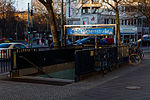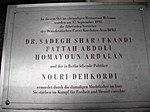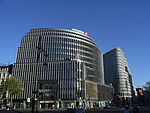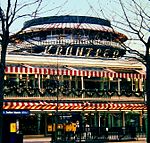Artillerie Prüfungskommission
Prussian ArmyWeapon testing

The Artillerie Prüfungskommission, (Artillery Test Commission) was founded in 1809 as part of the artillery of the Prussian Army. It was responsible for answering technical questions, testing the quality of new artillery materiel, and executing experiments. The Artillerie Prüfungskommission later became part of the Imperial German Army. Other nations had equivalent authorities, e.g. the Austro-Hungarian was called Artilleriekomitee. The former headquarters of the Artillerie Prüfungskommission on the Bundesallee in Berlin are still standing.
Excerpt from the Wikipedia article Artillerie Prüfungskommission (License: CC BY-SA 3.0, Authors, Images).Artillerie Prüfungskommission
Bundesallee, Berlin Wilmersdorf
Geographical coordinates (GPS) Address Website Nearby Places Show on map
Geographical coordinates (GPS)
| Latitude | Longitude |
|---|---|
| N 52.498072222222 ° | E 13.331202777778 ° |
Address
Bundeshaus
Bundesallee 216-218
10719 Berlin, Wilmersdorf
Germany
Open on Google Maps











